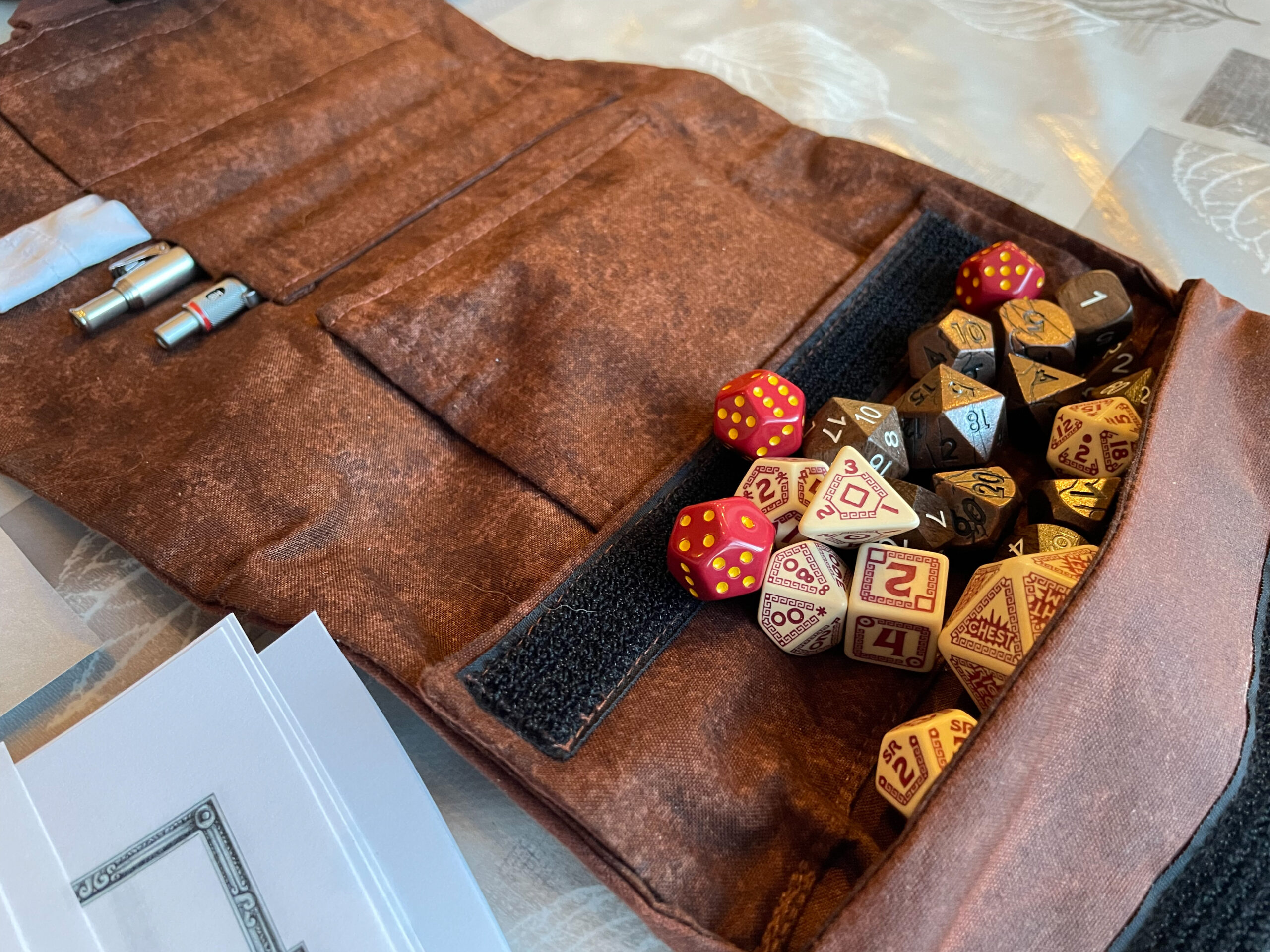Welcome to a new issue of the Journal of Runic Studies, the premier Malkioni publication for studies into the nature of Glorantha. If you haven’t subscribed yet, please consult with the spirit bound to the appropriate electronic page.
God Learner Sorcery
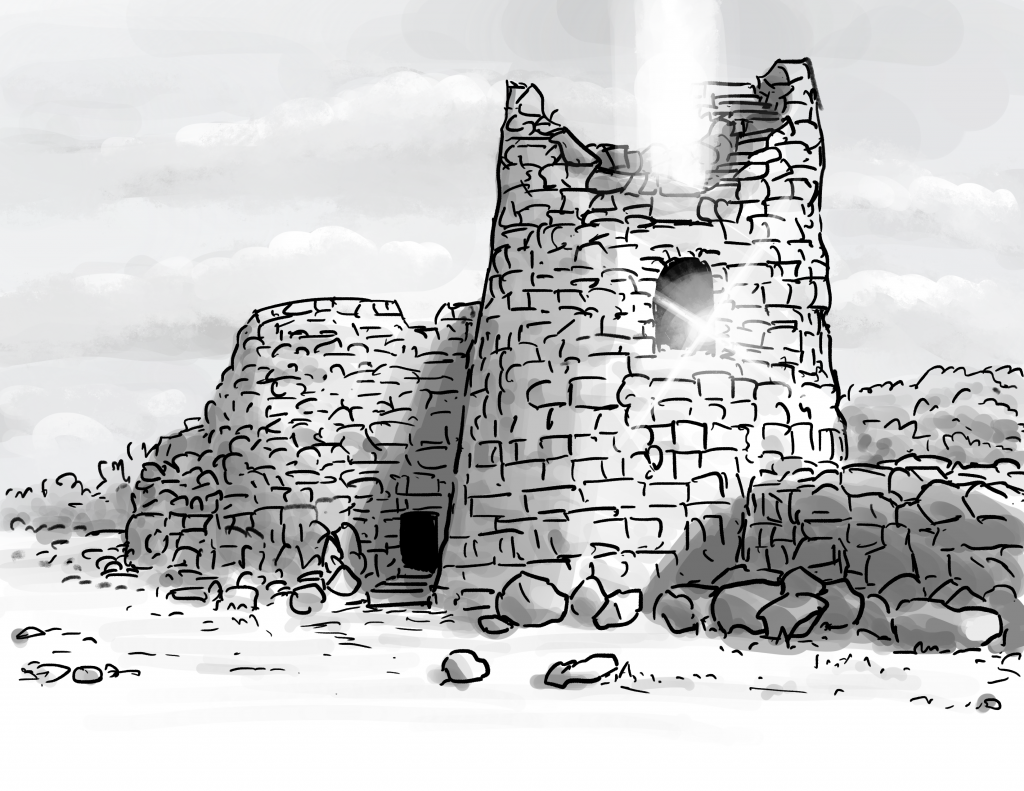
Here is what us God Learners were up to this week.
Glorantha Initiation: Michael, Gloranthan Fiction, and Not Worrying About It
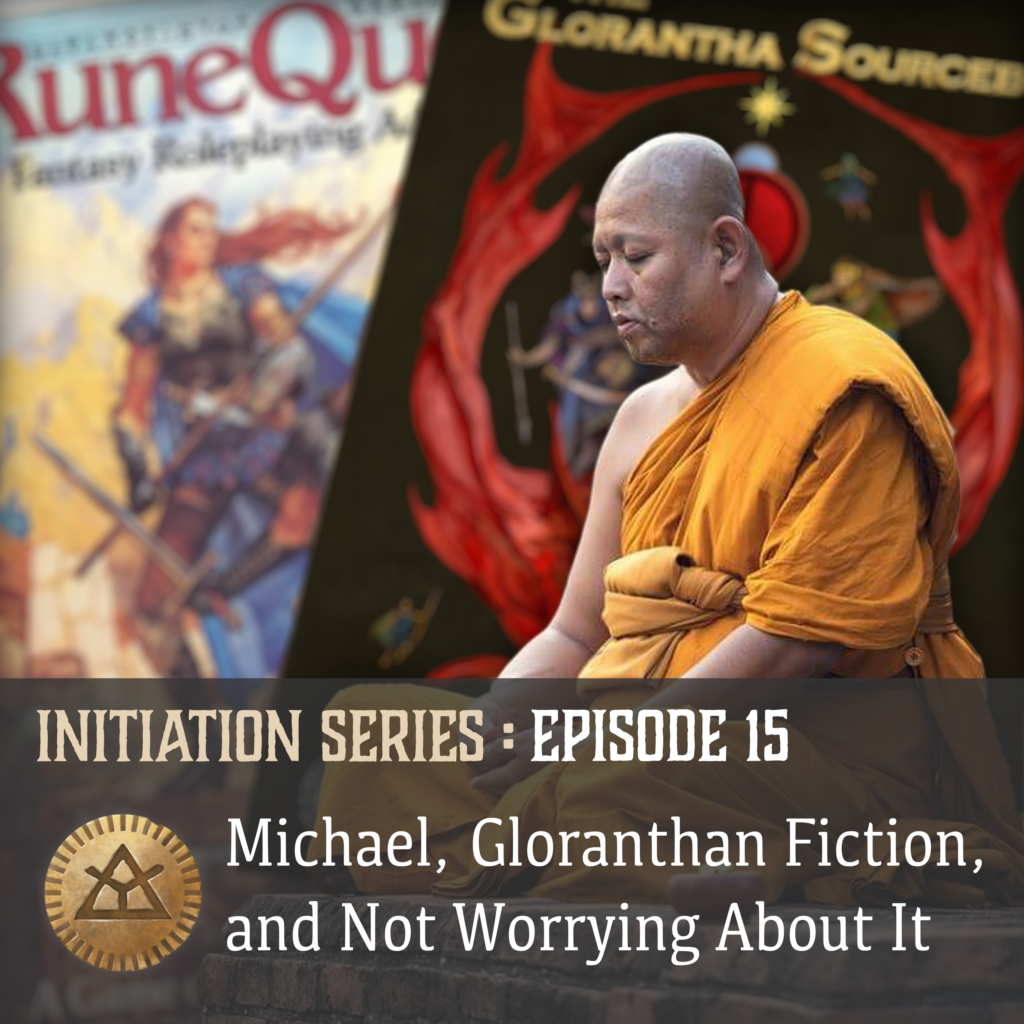
In our newest Glorantha Initiation episode, Ludo talks to Michael, who came out of the “deep freeze” with RuneQuest! We chat about old games, Prax, Gloranthan fiction, dealing with large amounts of lore, and not worrying too much about it.
ChaosiumCon 2023 Report
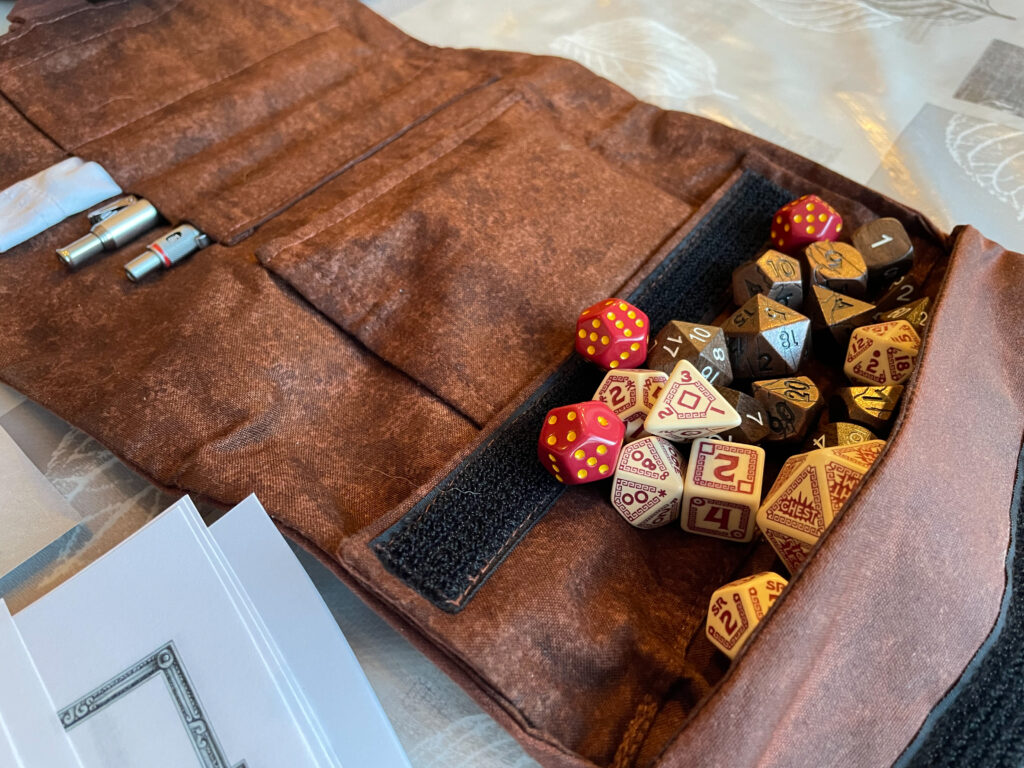
It’s April 2023, the Covid pandemic is still going, airline companies still suck, and the US is an increasingly dystopian place. So what can possibly make me take a flight to the US and spend time at some crowded indoors event? Well, it’s ChaosiumCon of course!
Here’s my report of what happened this year at the convention, I hope you like it.
Did you attend the convention and write about it? Send me your link and I’ll advertise it!
Jonstown Compendium

The Jonstown Compendium is Chaosium’s community content program for all Gloranthan games, hosted on DriveThruRPG. Disclaimer: all the relevant links are affiliate links that hopefully will let us cover some of the hosting and maintenance costs for the website and podcast! Thanks for using them!
Caravan Alley
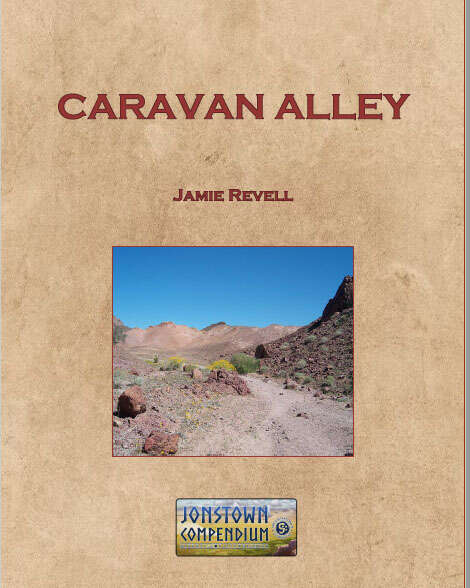
JK Revell continues his series of Praxian supplements with Caravan Alley, which focuses on the main trade route between Prax and Sartar. Just like the previous Day’s Rest, Caravan Alley is a medium-sized “mini-sandbox setting” that describes Praxian oases with NPCs, adventure seeds, and more. But unlike Day’s Rest single oasis, this one describes two oases: the Humakti dueling ground of Tourney Altar, and the fungus-riddled marshland of Biggle Stone!
Gloranthan Maps: Quivin Mountains, Heortland, and Skyfall Lake

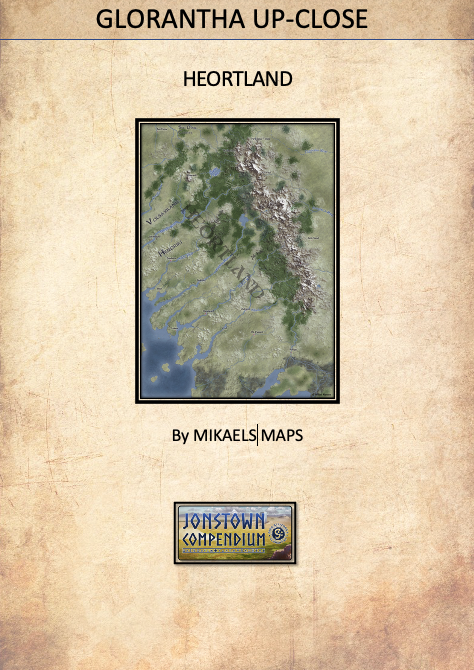
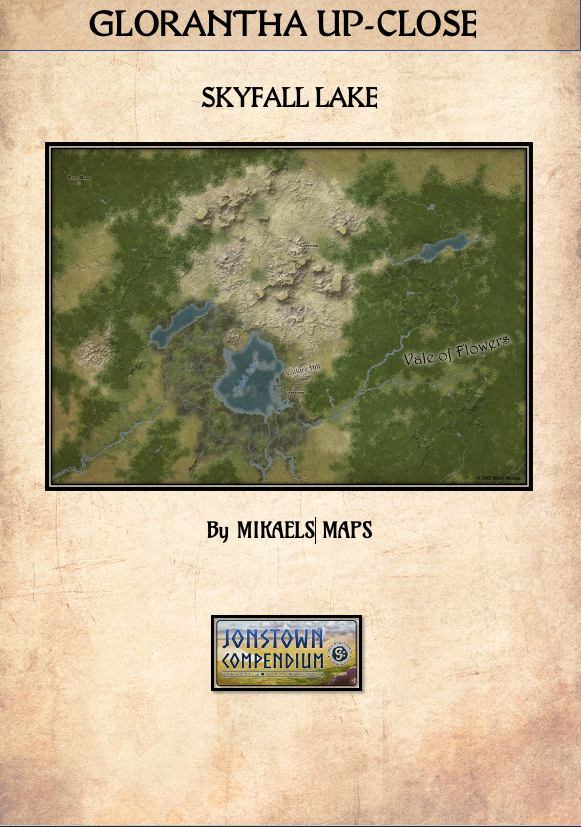
Mikael Mansen is back with three maps: the Quivin Mountains, Heortland, and Skyfall Lake. Not much to mention except that it’s the usual quality and style that you’ve seen with Mikael’s many other cartographic offerings. I just wish there were more variety… for instance the Vale Of Flowers could have benefited from some unique colours and patterns?
Anyway, note that Skyfall Lake and Quivin Mountains get a bonus “winter layer” with a snow-covered style.
Coming Soon: The Queen’s Star
Austin Conrad, the author of (among other things) the Monster of the Month series, is teasing “The Queen’s Star”:
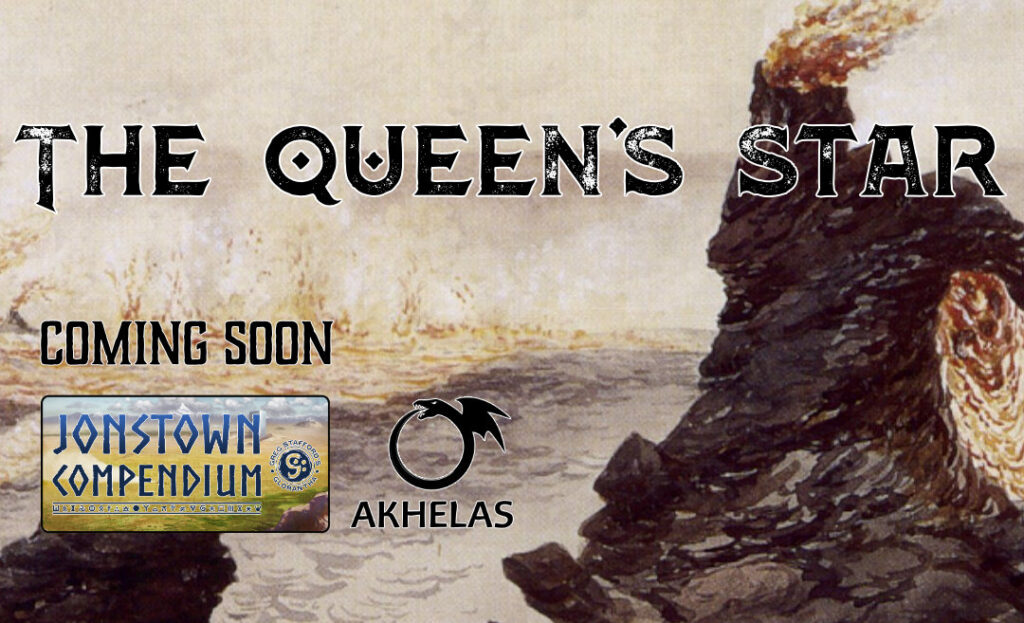
A dream comes in the night. The shade of Kallyr Starbrow—once Prince of Sartar—asks the adventurers to be her hands in the Middle World. One of the noble Star Captains has gone missing…
This new site-based adventure for RuneQuest invites the adventurers to travel to the Cinder Pits in the heart of Sartar to discover the fate of a star who fell from the Sky. It’ll be around 30 pages.
This should be released in a month or two.
Interview with Nick Brooke in Never Mind The Dice Rolls
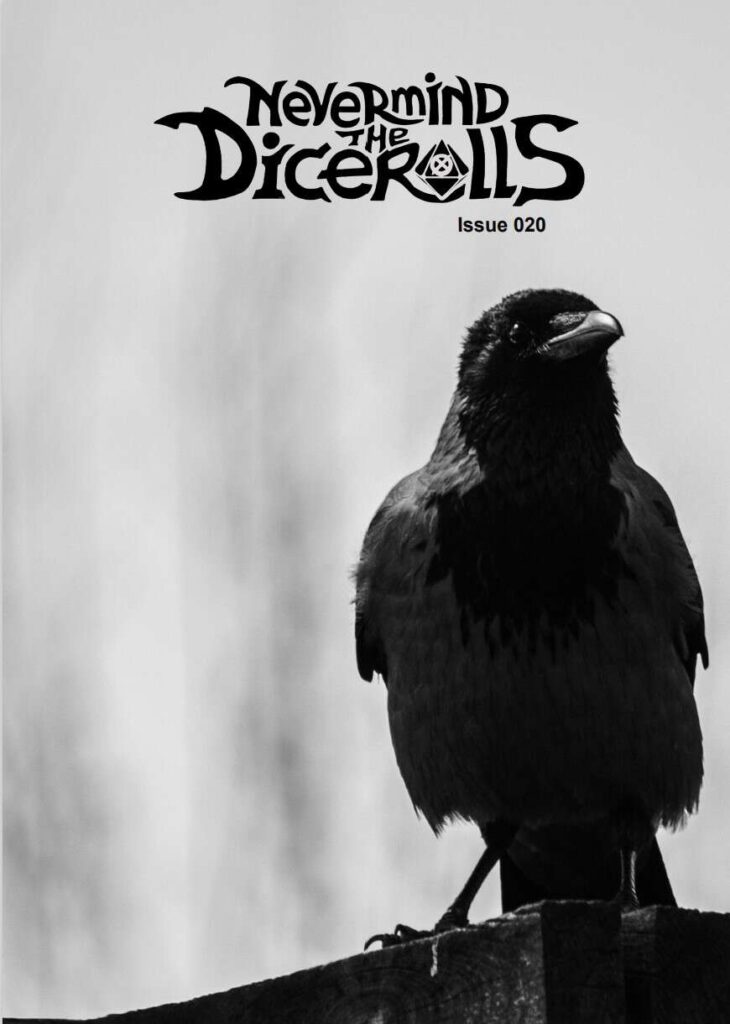
Tangentially related to the Jonstown Compendium is this interview of Nick Brooke, in his capacity as Chaosium’s community content embassador, in the RPG magazine “Never Mind the Dice Rolls“.
Jeff’s Notes

Jeff Richard, the current mastermind on everything Gloranthan at Chaosium, is often posting notes and thoughts on the RuneQuest Facebook group. Here’s our curated list from the past week. A partial archive of these sources is compiled on the Well of Daliath.
Celestial Gods Known by the Theyalans
The “ordinary Orlanth or Ernalda cultist” would know several “major celestial gods”, even though they don’t necessarily belong to the classic Theyalan pantheon, and even though they don’t necessarily find all of them important.
Jeff lists the following deities. I’m going to add a bit of information for those that I don’t know much about (which means maybe some of you don’t either):
- Yelm is the sun god, and patron god of many Pelorians and Grazelanders.
- Yelmalio is the part of Yelm that survived in the Great Darkness, brought light to many human, elf, and other communities. He is “easier to approach than Yelm”.
- Dayzatar is god of the “Sky itself”… he’s obsessed with purity and detachment from material considerations.
- Ourania is Dayzatar’s daughter, and Queen of the Heavens. She acts as Dayzatar’s voice (he’s not going to lower himself to, like, speak, right?) among other intermediary roles. Jeff also mentions the Celestial Chorus that Ourania leads. As far as I can tell, it’s a sort of choir that sings messages from Dayzatar to his followers. They have “angelic voices” and are called many names, like “Music of the Spheres“.
- Polestar is the leader of the sky army, I guess. Or chief bodyguard of celestial gods. Kallyr Starbrow got the eponymous star gem stuck to her forehead from this guy.
- Lokarnos is a “planetary god” (a planet instead of a star… so I guess you can land on them?) He invented the wheel, the wagon, counting, keeping time, and a few other super useful things for Yelm. He’s a Pelorian god of trade and travel, a bit like Issaries (I’m not sure if they’re friendly or not, though) If you check out the Red Book of Magic, you’ll see a couple of his spells, like “Coin Wheel” to… err, mint a Wheel coin from a block of gold, and “Hie Wagon”, which… err… makes wagons go faster? Yeah I know it doesn’t sound super amazing but I guess thoese are useful. Useful at least for teaching me the word “hie”!
- Tolat is a war god who also is (or lives on) a red planet. Huh huh. I see what you did there, Greg. Tolat, aka Shargash, is a popular war god worshipped all around Glorantha. He’s a son of the Sun and the Night, and was born in the Underworld. He’s bad ass, has a big red sword, and he kicked Orlanth’s and Humakt’s butt a couple times.
- Artia is the “Bat Goddess”. There are even Bat Hsunshen in Pamaltela who worship her as an ancestress. Bat people! Can you believe it? And since she’s a planetary goddess, you can point to her and say “Look! The bat signal!”
- Moskalf is another planet, known as Entekos in Peloria. She’s the goddess of the calm, breezy summer air. She tells her brother Orlanth to take a chill pill and let the sun shine.
- The Twinstars are weird: their associated deities allied with the Red Goddess in 1275 when some Imtherian hero named Jannisor almost sacked and destroyed Glamour. Part of his army was made of large number of Sable Riders. These people were somehow linked to the Twinstars, and whatever heroquesting shenanigans the Lunars did there helped “reveal” the association between the Sable Antelopes and the Red Moon. So the Sable Riders betrayed Jannisor and saved Glamour. Yay! If this all sounds super shady, it’s probably because it is. Anyway, these two planets change colours based on the Red Moon’s phase, a bit like Lunar traffic lights or something. Fun stuff.
- Annilla is the goddess of the Blue Moon, responsible for the tides. She’s also good at hiding. Some trolls like her a lot.
- And finally, the Red Moon of course. Not everybody likes her, but nobody can deny she’s there.
Air Gods Known by the Lunars
Okay let’s look in the mirror and see what air gods are known in the Lunar Heartland:
- Orlanth, obviously. He’s big, he’s loud, he killed the sun god, fucked everyone with the Great Darkness, and then when he tried to fix his fuck-up he totally made it all about himself. What a jackass. Jeff adds this Lunar perspective: “Orlanth rejects Yelm’s authority and so the Red Goddess contends with him over the Middle Air, and many believe that if she succeeds, a new Golden Age will begin.“
- Valind is the god of the freezing winter cold. In theory, the Lunar Heartlands are far enough north that they should have very cold winters, with plenty of snow and ice, what with Valind’s Glacier nearby and all that. But Jeff mentions the Kalikos Expedition, which prevents this, or at least mitigates it. This expedition was originally setup by Emperor Reclusus in 1593. It’s an annual heroquest during which the best Lunar magicians and warriors go to the edge of the world to strengthen one of the four pillars that holds up the sky. Somehow that makes winters milder in Peloria? Go figure. It’s magic. Note that during the Hero Wars, Argrath also heroquests and fucks up the Kalikos Expedition to bring environmental warfare to the Lunar Empire. Because obviously that’s what heroes do.
- We’ve already mentioned Entekos in the previous section.
- Humakt is not really an air god but I guess he’s closely associated with them. “He is the Carmanian War God and is still worshiped there and in the Lunar Provinces. He was defeated by Yanafal Tarnils, who is the Lunar War God.“
- Storm Bull you also should know already. “He was the patron god of the awful Bull Shahs (and still worshiped by some Carmanians), and is worshiped by the hill tribes of Brolia and Talastar.“
The Lunar Empire Armies
This follow-up note is about the war gods of the Lunar Empire. As expected it’s a lot of Yanafal Tarnils, Polaris, and Humakt, but also Shargash (which we just learned about above) and a guy called Avivorus, which I didn’t know before. He’s the “sun spear god”.
What’s interesting in this note is the break down of who worships who, between normal soldiers and ranking officers, and between different provinces compared to the heartland.
If you want to know more about the army, be sure to also check out this note on the military might of the Lunar Empire in 1625. The note compares the imperial armies to the other big powers of the time: the Kingdom of War, the Voor-Ash Pentans, Kralorela, Seshnela, and Loskalm. Sartar “barely even rates” at this point, but of course this will change.
There’s a lot of interesting observations in these two notes so I highly recommend reading them!
Thoughts on Gloranthan Religion
Jeff gets philosophical about Gloranthan gods and their worshippers.
Because the gods are powerful, but not all-powerful or all-knowing, the question of theodicy that so often consumes moderns just doesn’t show up. Ever seen a tornado close up? That’s divine power. Is it good or is it evil? It simply IS – a part of the cosmos. In Glorantha I can wield some of that divine power by initiating to the cult of Orlanth.
I was listening to a podcast about ancient Greece recently and this was a point that a guest historian was trying to make: that ancient Greeks did not really care much about whether this or that god was “good”. None of the Greek gods were “good”. Many of these gods were straight-up horrible people, and all made at least a few notable mistakes. The Greeks were aware of this, and did not hold up any of these gods on a pedestal…. well, ok, they did. They did build plenty of god statues on top of temples and so on, but I didn’t mean a literal pedestal, I meant a figurative pedestal. This wasn’t at all like modern religions that try to sell their god as being a perfect role model.
The Greeks, and virtually all polytheist cultures from the Stone Age to the Iron Age, only cared about gods that were somehow useful. Useful for everyday life, for work, for war, for love, and so on. In Glorantha, they are obviously useful since they let you wield their magic.
For those of you who keep referring to old HeroWars content (you know who you are!), Jeff also has some explanations:
Thunder Rebels really missed the point here – and Greg and I made the decision not to update it for HQ because we both agreed it really didn’t describe the Orlanthi religion in Dragon Pass. If it describes anything, it is the henotheism of the Chariot of Lightning movement in Ralios, where Orlanth is worshiped as the supreme god (instead of just “king of the gods”). But that is a topic for another thread.
Rule of Thumb for Rune Level Demographics
I’ve always hovered around 1% of a cult’s population at Rune levels (Rune Priest, Rune Lord, etc) but it looks like Jeff goes a bit higher than that for many cults:
[1% is] a little less than my usual rule of thumb. Most all adults are initiates, regardless of culture, and around 2% of initiates are Rune levels. So we’ve got about 1.2 million Lunar initiates (all cults) in the Heartlands, around 20-24,000 Rune levels, with around 10,000 Red Goddess initiates at max.
These are not hard numbers of course. Thanks to war, pressure, desperation, or whatever, with some cults the number might be over 2% and in others it might be closer to 1%.
So Sartar we have 34,000 initiates of Orlanth, but might have somewhere around a 1000 rune levels.
This is something you can keep in mind when doing some world-building for your campaign.
A Reminder About the Stafford Library
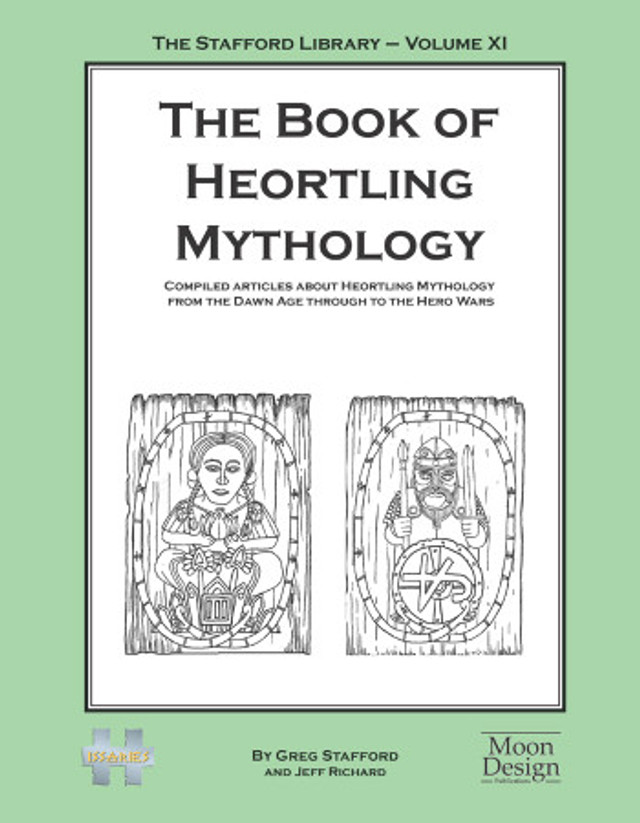
Gloranthaphiles with too much free time often dig into the Stafford library books a bit too much, so Jeff sets the record straight about some of them:
The Heortling Mythology book was never intended to be canon. It just started from a desire that Greg had to have all the stories that appeared in various books in one place. He then added a bunch of additional stories, I added some more. It was a rough draft and notebook for what would eventually become Belintar’s book (which ultimately formed the basis of the Cults series). I proposed that we publish the book as a way of getting some revenue; Greg was ambivalent at best (just as he was about Arcane Lore) but went along with it. On retrospect, Greg’s ambivalence was well warranted.
Miscellaneous Notes
- Gloranthan events in a historical context: this is another occurrence of Jeff putting Gloranthan and Earth history side by side to remind people that a lot of stuff happened “a long time ago” as far as adventurers and NPCs are concerned.
- These photos of the Colorado History Center can help add a little bit of Western Native American flavour to your Glorantha. Plus, Jeff reminds people of the value of using multiple different real-Earth cultures to inform your world-building: “So for example, the Orlanthi concept of sex and gender is inspired by the Bugis people of Indonesia.“
Community Roundup
The community roundup is our highlight of interesting things being mentioned in the Glorantha-related Facebook groups, sub-Reddits, and other similar online places.
Austin Conrad Reviews Duckpac
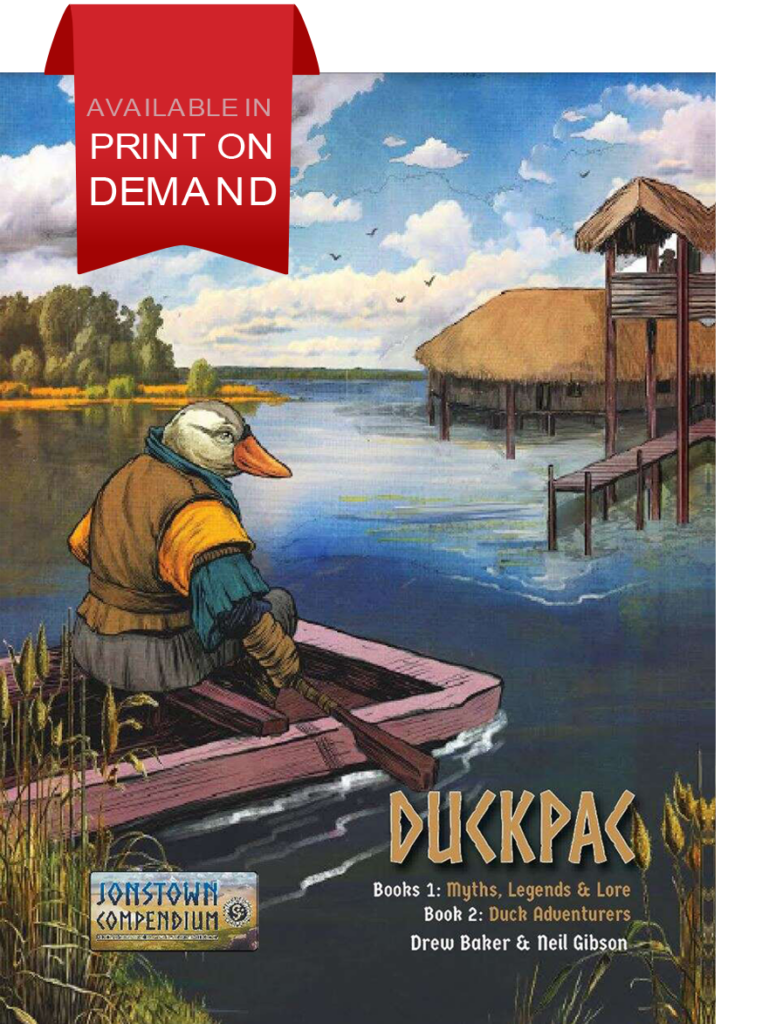
Well, yes… what it says in the title.
In 1982 Chaosium published the innovative species-specific “splatbook” Trollpak. This boxed set detailed the culture, religion, history, and society of the Uz—called trolls by humans—thereby fleshing this species out as a player option, rather than a statblock. It seems rather fitting that a nice, round forty years later indie publisher Legion Games began to release their homage: Duckpac.
If you’re duck-curious, check it out and hopefully it will help you make up your mind before buying! Austin tells you about all the bits he likes, and the few bits he doesn’t. Not much, as you can tell by some of his conclusions:
Duckpac attempts to bring ducks to your RuneQuest table as a fully detailed species for players, and it succeeds admirably. […] In my mind, this is yet another book which is absolutely not “just” a fan publication. Rather, I would call Duckpac another indicator that the Jonstown Compendium is maturing into a full “indie” or “third-party” publishing platform for RuneQuest.
There is also some advice on which print-on-demand version to get (premium or standard), if you’re planning on getting a dead-tree version.
Lee’s RuneQuest Playlist
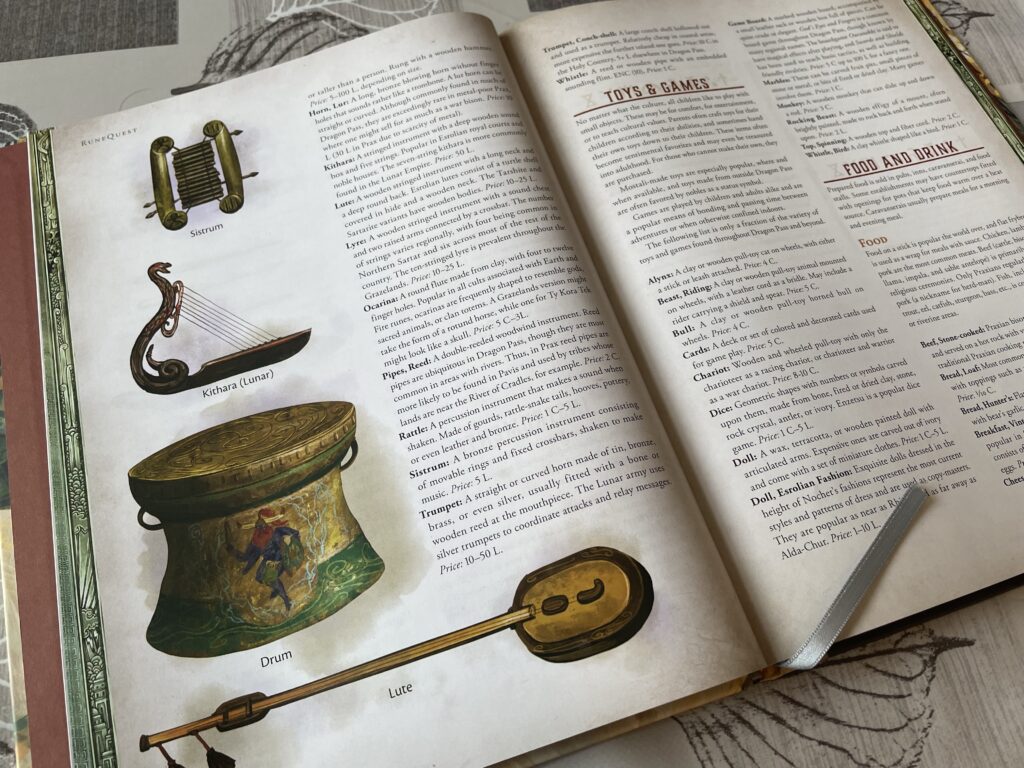
Lee O’Connor (which we interviewed on the podacast) has shared this Spotify playlist of music suitable for playing during Runequest Glorantha games!
Of course, everybody has different musical tastes, different visions of Glorantha, and different needs for background music… but hey, a playlist to start from is better than nothing to start from, right? Expect plenty of video game, TV, and movie soundtracks in this one, plus a few deep cuts of scandinavian folk music and australian gothic avant-garde dark wave ambient err something. There’s even some Philippe Glass!
Brace yourselves: there’s almost a thousand songs in there, enough for more than 24 hours of uninterrupted play!
Thank you for reading
That’s it for this week! Please contact us with any feedback, question, or news item we’ve missed!


